The Painting
Le tableau
Michèle Lemieux
2024
| 11 min 56 s
Animation on the Alexeïeff-Parker pinscreen
Awards and Festivals
Official Selection – Short Films in Competition L'officielleAnnecy International Animation Film Festival, France (2024)
Official Selection – Time For The Masters programAnimafest Zagreb – World Festival of Animated Film, Croatia (2024)
Official Selection – Canadian CompetitionSommets du cinéma d'animation, Montréal, Canada (2024)
Official SelectionOttawa International Animation Festival, Canada (2024)
Official SelectionFlickers' Rhode Island International Film Festival, U.S.A. (2024)
Official Selection – International CompetitionCINANIMA – International Animated Film Festival, Espinho, Portugal (2024)
Official SelectionVancouver International Film Festival, Canada (2024)
Official Selection – International Short Film CompetitionKaboom Animation Festival, Amsterdam (2025)
Official SelectionAnima, the Brussels International Animation Film Festival, Belgium (2025)
Official SelectionRendez-vous Québec Cinéma - RVQC, Montreal, Canada (2025)
Official SelectionVienna Shorts International Short Film Festival, Austria (2025)
Official SelectionFest Anča International Animation Festival, Slovakia (2025)
A National Film Board of Canada production
An animated short film created using the legendary Alexeïeff-Parker pinscreen, The Painting revisits the destiny of Queen Mariana of Austria through her 1652 portrait by Velázquez. Married at the age of 14 to her uncle Philip IV of Spain, who was 30 years her senior, Mariana had a bleak destiny: her five children, marked by generations of inbreeding, either died in infancy or were unfit to rule, ultimately ending the Spanish Habsburg dynasty.
Filmmaker Michèle Lemieux demonstrates incredible skill and precision in recreating the Velázquez portrait. She was guided both by a reflection on the brutality of institutionalized incest and by the dreamlike musings to which the pinscreen lends itself. The shadow play created by hundreds of thousands of pins and the effects of light and colour work hand in hand to animate eyes, distort faces and dissolve the very fabric of the painting. Simultaneously physical and intangible, painful and tender, this poem of a film reflects on its own (im)materiality, and on art’s power to capture the soul—or to soothe it.
Trailer
Poster
ONE-LINER & TWO-LINER
Two-liner
A short film made using pinscreen animation, The Painting explores the 1652 portrait of Queen Mariana of Austria by Velázquez. Michèle Lemieux demonstrates incredible mastery of the pinscreen, playing with shadow and light to evoke the tragic fate of Mariana, who was married to her uncle at the age of 14. Both painful and tender, this experimental work is a poem of a film: a meditation on the brutality of institutionalized incest and art’s power to capture the soul.
One-liner
Animated on the pinscreen, the film revisits the tragic fate of Queen Mariana of Austria and her 1652 portrait by Velázquez.
LONG SYNOPSIS
An animated short film created using the legendary Alexeïeff-Parker pinscreen, The Painting journeys back centuries to revisit the destiny of Queen Mariana of Austria through her 1652 portrait by Spanish master Diego Velázquez. Married at 14 to her uncle Philip IV of Spain, who was 30 years her senior, she carried the heavy burden of producing a male heir. Mariana was only 18 years old in the Velázquez portrait, but her eyes already betray a sense of sadness and solitude. The Habsburgs’ reluctance to marry outside the family meant that the five children born of this union were marked by 16 generations of inbreeding; they either died in infancy or were unfit to rule, ultimately ending the Spanish Habsburg dynasty.
Fascinated by the portrait and the historical dramas it encapsulates, renowned animation filmmaker Michèle Lemieux plays with light and shadow to bring an imaginary world beyond time to life. The film opens in a museum, lifting Mariana out of the Spanish court to reveal a mysterious, fragile and intemporal figure.
The artistic heir to one of only two active Alexeïeff-Parker pinscreens in the world, Lemieux demonstrates incredible skill and precision, but also wonderful creative freedom in recreating the Velázquez portrait. She was guided both by a reflection on the brutality of institutionalized incest and by the dreamlike musings to which the pinscreen lends itself. The effects of light and colour work hand in hand to animate eyes, distort faces and dissolve the very fabric of the painting. Small details blossom into a universe teeming with life—roots, organs, birds, storms—but tinged with death. The shifting light reveals troubling similarities, and indeed Velázquez painted Mariana’s face directly over an unfinished portrait of her uncle/husband. As if by magic, the shadow play created by hundreds of thousands of pins both forges the shackles of patriarchy and then melts them, freeing the captives.
Its powerful images heightened further by an evocative soundscape, The Painting is a poem of a film, simultaneously physical and intangible, painful and tender, heavenly and deeply human. Michèle Lemieux has created a monumental experimental work, one that goes beyond mere historical biography or animated painting to contemplate its own (im)materiality and the power of art to capture the soul—or to soothe it.
ALEXEÏEFF-PARKER PINSCREEN
Though invented in the 1930s, the Alexeïeff-Parker pinscreen remains an enigmatic and little-known device in the wider world of animation. The model owned by the NFB is a vertical panel consisting of hundreds of thousands of tiny white tubes set in a frame. Each tube holds a tiny retractable pin that can extend out several millimetres. When the screen is lit from the side in a dark room, the pins project shadows whose lengths vary depending on the pins’ height, creating a wide range of grey tones, from deep black to bright white. When pressed down completely, the pins cast no shadows and reveal the white background.
To make a film, parts of the pinscreen are depressed with various small tools to create an embossed image, and a photograph is taken. The image is then slightly altered, another photograph is taken, and so on. It takes 24 photographs to create one second of animation. The tapestry of pins and shadows creates a range of tones that gives the animated image the look of an etching or charcoal drawing. Like a musical instrument, this rare and remarkable device lends itself to improvisation and intuitive exploration.
Michèle Lemieux first encountered the Alexeïeff-Parker pinscreen in 2006 at an NFB workshop given by Quebec filmmaker Jacques Drouin. She was instantly smitten with this distinctive technique and its world of possibilities. For years, Drouin was alone in using the pinscreen, making masterpieces such as Mindscape (1976) and Nightangel (1986), and thus preserving this precious legacy at the NFB. But he passed on the secrets of using and maintaining the instrument, along with its history and that of the other existing models, to Lemieux, who has since gone on to make two short films of her own on the pinscreen: Here and the Great Elsewhere (2012) and her latest, The Painting (2024), in which she experiments with coloured gels and moving light.
Michèle Lemieux is today one of the few artistic heirs to this legendary technique. The instrument she uses, dubbed the NEC (for nouvel écran or “new screen”) comprises 240,000 pins set into a 52 x 39-centimetre screen. The NFB purchased it in 1972 from the device’s inventors, Russian-born Frenchman Alexandre Alexeïeff and American Claire Parker, at the urging of renowned animator Norman McLaren. It is a more elaborate version of the original model designed in the 1930s.
There are only two working Alexeïeff-Parker pinscreens in the world today: the NEC in Montreal and the Épinette, built in 1977 and later restored by Drouin and Lemieux. For the past 10 years, the Épinette has belonged to the Centre national du cinéma et de l’image animée (CNC) in France. In 2015, Lemieux used it in a pinscreen workshop for a group of filmmakers at Annecy. And so the tradition is passed on and new vocations emerge, giving the “Stradivarius of animation” a new lease on life.
DIRECTOR’S STATEMENT
I was 20 when I first locked eyes with Queen Mariana of Austria, as painted by Diego Velázquez in 1652. I saw in the painting the expression of a soul, a silent fragment of life reaching through time; though I knew nothing about her, I was deeply moved. There seemed to be something miraculous about how mere paint, brushes, splashes of colour and light, distributed with astonishing freedom, could create such a flow of emotion. A single lifetime would never be enough for me to wrap my head around it. At age 14, Mariana married her uncle, Philip IV of Spain, 30 years her senior. Between the ages of 17 and 39, she endured the death of nearly all her children and grandchildren, who were marked by generations of inbreeding. Only her severely disabled son, Charles II, would survive her, and only by a few years.
The Painting is a film about a woman reflecting on a woman’s fate: the position she is assigned, the role she is forced into, the control exerted over her body and privacy, the reductive requirements imposed on her by men, her life’s trajectory not her own. This was true in 1652, when Mariana posed for Velázquez, and it is unfortunately still true today in too many parts of the world. Written history takes little interest in the lives and bodies of women, and this confiscated voice is part of the shared heritage of womanhood. I can try to imagine what Mariana’s life was like, but I will never know anything about her feelings, her desires or her talents. The painting is not completely revealing; there’s an air of mystery about it. It continues to haunt me because it depicts a young woman who seems as thoughtful as if she were alive. A fragment of life, a moment of humanity that does not ebb away.
I have returned to this painting throughout my life. I studied it, I looked at it constantly, I copied it and, at some point, I felt the gaze was reversed. I was no longer looking at Mariana; she was looking at me. If I wanted to truly understand the sadness of her expression, I would have to search within myself.
I wanted to make a film that would not be read as a biography, but rather as a poem. A film that flowed with the movement of thought and memory—one that didn’t reveal everything. The film’s thread emerged very organically, evolving with my own experiences and delivering surprises right to the end. Because of the creative process that governed the making of the images and the editing, this is an experimental film.
To preserve the painting’s stillness and silence, I wanted to create movement with a series of still images connected through a play of light. In depicting a painting by Velázquez—a master of colour and light—I felt it was essential to introduce colour into the pinscreen by taking advantage of one of the instrument’s intrinsic components: light. After a lengthy period of research, I hit upon lighting methods that differed from the usual black-and-white process. I developed various mobile lighting techniques using coloured gels, and I played with exposure times. These experimental techniques produced surprising and unexpected results. Working with editor Annie Jean was also crucial. The film was written and in part animated in the editing room, using fades to create movement.
The symbiotic work also broadened to include the sound design with the collaboration of Catherine van der Donckt. Sound is how we connect with Mariana as a living person and not merely a representation in a painting. We don’t hear her as a historical figure, but rather as a timeless woman walking toward her fate, though she remains silent, as in the painting. Sounds reach us as if muted, distorted, out-of-sync, having lost their original purity—altered by the passage of time. They now convey a fleeting trace but are rooted in a memory. The same goes for the music of Robert Marcel Lepage, whose soundtrack is woven from the chaos of thought.
Mariana will remain among the living so long as the original painting or reproductions exist. This is the gift of eternity bestowed upon her by Velásquez. Not everyone is so lucky. If he’d been a mediocre painter—or one who merely lacked genius—she would have been almost erased from the face of the Earth, existing as a few lines in the pages of history.
Michèle Lemieux
Excerpt
Contact NFB publicist for broadcast-quality excerpts.
Images
Loading...
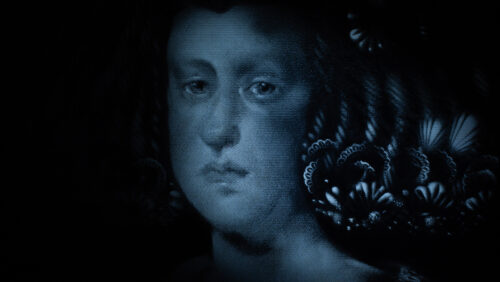
Download
Loading...

Download
Loading...
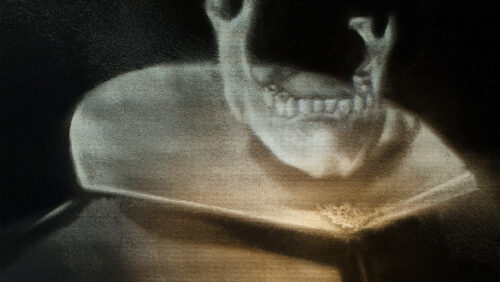
Download
Loading...
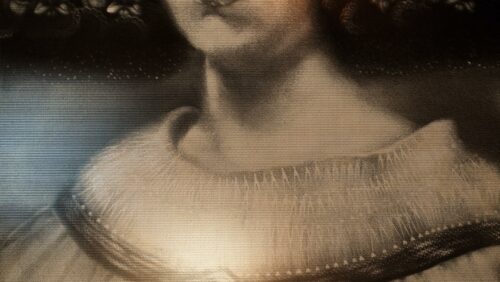
Download
Loading...
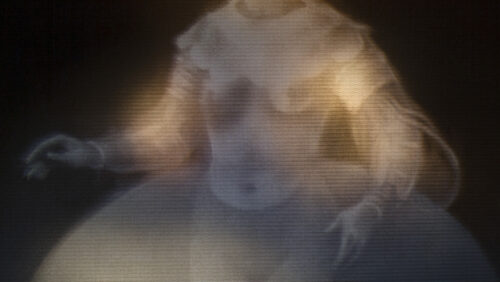
Download
Loading...
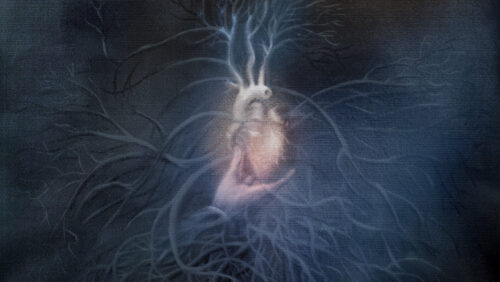
Download
Loading...
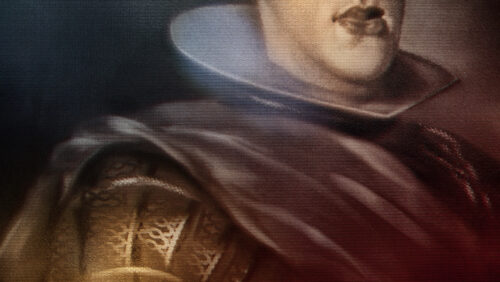
Download
Loading...

Download
Loading...
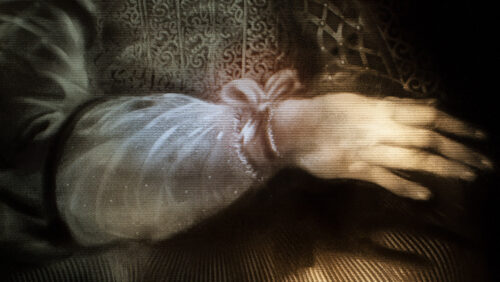
Download
Contact NFB Publicist for high-resolution images for print.
Team
Michèle Lemieux
Writer, Animator and Director
Photo
Photo : Wolfgang Noethlichs
Christine Noël
Producer and Executive Producer (NFB)
Photo
Photo : Valérie Sangin
Julie Roy
Producer and Executive Producer
Photo
Photo : Valérie Sangin
Credits
Written, Animated and Directed by
Michèle Lemieux
Producers
Christine Noël
Julie Roy
Editing
Annie Jean
Sound Designer
Catherine Van Der Donckt
Original music and adaptation of “Mareta, mareta no’m faces plorar”
Robert Marcel Lepage
Sound Design Consultant
Benoît Dame
Vocal Soloist
Bronwyn Thies-Thompson
Voice
Annie Jean
Musicians
Baroque Guitar and Tambourine
Kerry Bursey
Cello
Sheila Hannigan
Viol
Pierre-Yves Martel
Violin
François Pilon
Sound Recording
Geoffrey Mitchell
Re-recording Mixer
Jean Paul Vialard
Additional Animation Sequences
Nicolas Liguori
Graphic Designer
Réjean Myette
Infographics
Pascal Huynh
Alexandre Morin, ZABELLE Inc.
Traduction
Helge Dascher
Production Assistant
Pierre M. Trudeau
Art History Consultant
Alexandre Grégoire
Online Editing
Serge Verreault
Technical Coordinators
Lyne Lapointe
Jean-François Laprise
Mira Mailhot
Esther Viragh
Technical Directors
Pierre Plouffe
Eric Pouliot
Technical Specialist, Animation
Yannick Grandmont
Studio Coordinators
Michèle Labelle
Rose Mercier-Marcotte
Laetitia Seguin
Administrators
Karine Desmeules
Diane Régimbald
Senior Production Coordinators
Josiane Bernardin
Camila Blos
Nellie Carrier
Legal Counsel
Christian Pitchen
Rights Clearance Research
Sylvia Mezei
Marketing
Geneviève Bérard
Publicist
Nadine Viau
Inspired by the portrait Queen Mariana of Austria (1652–1653)
Painted by Diego Rodríguez de Silva y Velázquez (Seville, 1599 – Madrid, 1660)
Oil on canvas
Height: 234.2 cm; Width: 132 cm
Museo Nacional del Prado, Madrid, Spain
© Photographic Archive Museo Nacional del Prado
Line Producers
Mylène Augustin
Mélanie Boudreau Blanchard
Anne-Marie Bousquet
Thanks to
Jacques Drouin
Annie Jean
Folimage
Angela Grauerholz
Olivier Calvert
David Shewan
Patrick Bouchard
Claude Cloutier
Theodore Ushev
Carlos Ferrand
Oana Suteu Khintirian
Special thank you
Wolfgang Noethlichs
The Painting
Animation Studio, French Program
National Film Board of Canada
© 2024 National Film Board of Canada
Media Relations
-
About the NFB
The National Film Board of Canada (NFB) is a leader in exploring animation as an artform, a storytelling medium and innovative content for emerging platforms. It produces trailblazing animated works both in its Montreal studios and across the country, and it works with many of the world’s leading creators on international co-productions. NFB productions have won more than 7,000 awards, including seven Oscars for NFB animation and seven grand prizes at the Annecy festival. To access this unique content, visit NFB.ca.